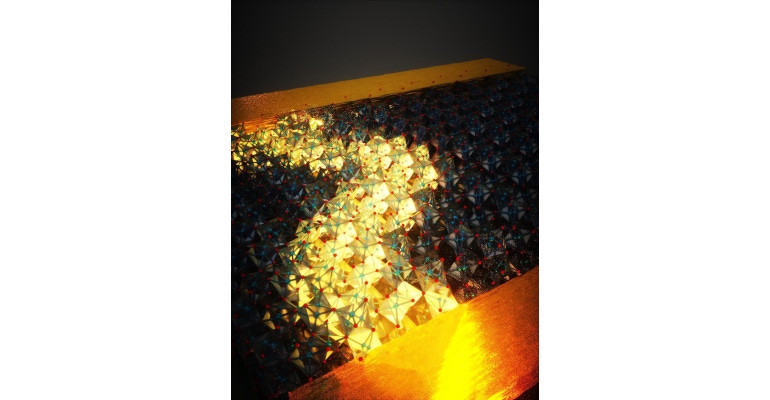Material Has Unique Ability to Remember Like the Brain
Vanadium oxide has a memory of its last external stimuli for three hours or more, a discovery that can impact future electronics development.
September 30, 2022

A material commonly used in electronics can "remember" its entire previous history of external stimuli, the first such material discovered to have this innate property, researchers have found. A team at the Swiss Federal Institute of Technology—commonly known as EPFL--discovered that vanadium oxide has a memory effect in its structure that is unique to the material, though it may also exist in other materials, researchers said.
Mohammad Samizadeh Nikoo, a PhD student at EPFL School of Engineering’s Power and Wide-band-gap Electronics Research Laboratory (POWERlab), made the discovery by accident while researching phase transitions in the material for his thesis, he said.
Vanadium oxide has an insulating phase when relaxed at room temperature but undergoes a steep insulator-to-metal transition at 68 degrees Celsius. This is due to changes in its lattice structure at that temperature.
Samizadeh Nikoo's work was meant to discover how long it takes for the material to transition from one stage to another. However, what he found after taking hundreds of measurements was something else: a volatile memory effect in which “the material reverts back to the insulating state right after removing the excitation," the researchers said in a press statement.
Making the Vanadium Oxide Discovery
Samizadeh Nikoo's discovery came during experiments in which he applied an electric current to a sample of vanadium oxide, in which he found that the current moved across the material along a path until it exited on the other side. The material responded to the current by heating up as it passed through, changing state. However, once the current had passed, the material returned to its initial state, he said.
The experiment was repeated, causing Samizadeh Nikoo to realize that the time it took to change state was directly linked to the history of the material and not the electronic reaction, noted Elison Matioli, am EPFL professor who heads the POWERlab.
“The [vanadium oxide] seemed to ‘remember’ the first phase transition and anticipate the next,” he explained in the statement.
Moreover, the material could remember its most recent external stimulus for up to three hours--or potentially for even days--though researchers as yet don't have the instruments to measure this type of duration, Matioli said.
Proof and Significance
The team conducted numerous measurements to ensure the observation was not a fluke, corroborating their results by applying the new method to different materials at other laboratories around the world. Researchers said they were surprised by the memory effect, which is not related to electronic states but rather with the physical structure of the material, Matioli said.
"It’s a novel discovery: no other material behaves in this way," he asserted.
In fact, the discovery replicates well what happens in the brain, with vanadium oxide switches acting similarly to neurons, researchers said.
The discovery is significant because since the memory effect is an innate property of the material itself, it can be applied uniquely to developing high-performance electronics devices, researchers said.
Impact on Future Devices
Engineers rely on memory to perform calculations of all kinds. Right now, materials that can enhance the calculation process by offering greater capacity, speed, and miniaturization are in high demand—in particular for data-storage and processing devices like processors, researchers said. Vanadium oxide has all of these characteristics along with its continuous, structural memory, which sets it apart from conventional materials that store data as binary information dependent on the manipulation of electronic states, they said.
"Manipulation of structural—rather than electronic—states could provide a path to ultrascaled low-power functional devices, but the electrical control of such states is challenging," researchers wrote in a paper on their work in the journal Nature Electronics.
Discovering, then, that a material shows "electronically accessible long-lived structural states" provides a pathway for novel data storage and processing solutions, they wrote.
Researchers compared the states as "exhibiting features similar to glasses," they wrote. Thus, the discovery paves the way for the development of low-power semiconductors that can "outperform conventional metal–oxide–semiconductor electronics in terms of speed, energy consumption, and miniaturization as well as provide a route to neuromorphic computation and multilevel memories," researchers wrote.
About the Author(s)
You May Also Like



